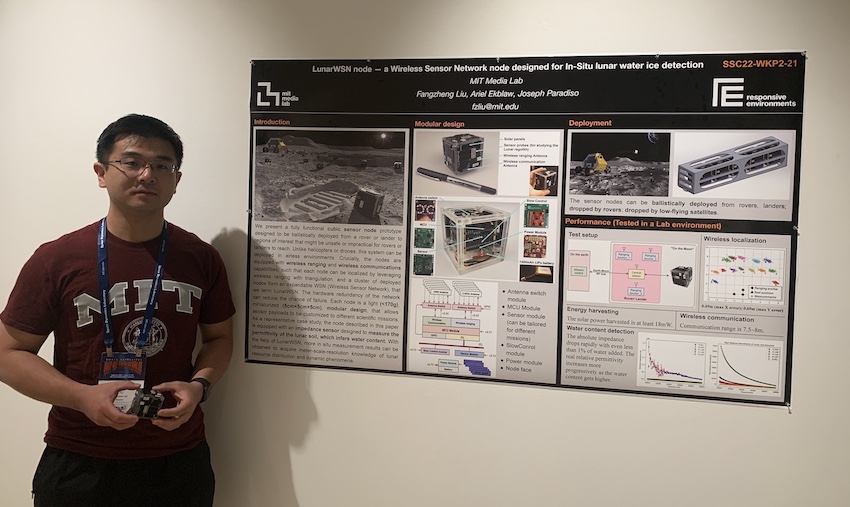LunarWSN
Fangzheng Liu, Ariel Ekblaw, and Joseph Paradiso. "LunarWSN Node-A Wireless Sensor Network Node Designed for In-Situ Lunar Water Ice Detection." (SmallSat, 2022). [PDF]
Overview
We present a fully functional cubic sensor node prototype designed to be ballistically deployed from a rover or lander to regions of interest that might be unsafe or impractical for rovers or landers to reach. Unlike helicopters or drones, this system can be deployed in airless environments. Crucially, the nodes are equipped with wireless ranging and wireless communications capabilities, such that each node can be localized by leveraging wireless ranging with triangulation, and a cluster of deployed nodes form an expandable WSN (Wireless Sensor Network), that we term LunarWSN. The hardware redundancy of the network can reduce the chance of failure. Each node is a light (less than 170g), miniaturized (5cm x 5cm x 5cm), modular design, that allows sensor payloads to be customized to different scientific missions. As a representative case study, the node described in this paper is equipped with an impedance sensor designed to measure the permittivity of the lunar soil, which infers water content. With the help of LunarWSN, more in situ measurement results can be obtained to acquire meter-scale-resolution knowledge of lunar resource distribution and dynamic phenomena.
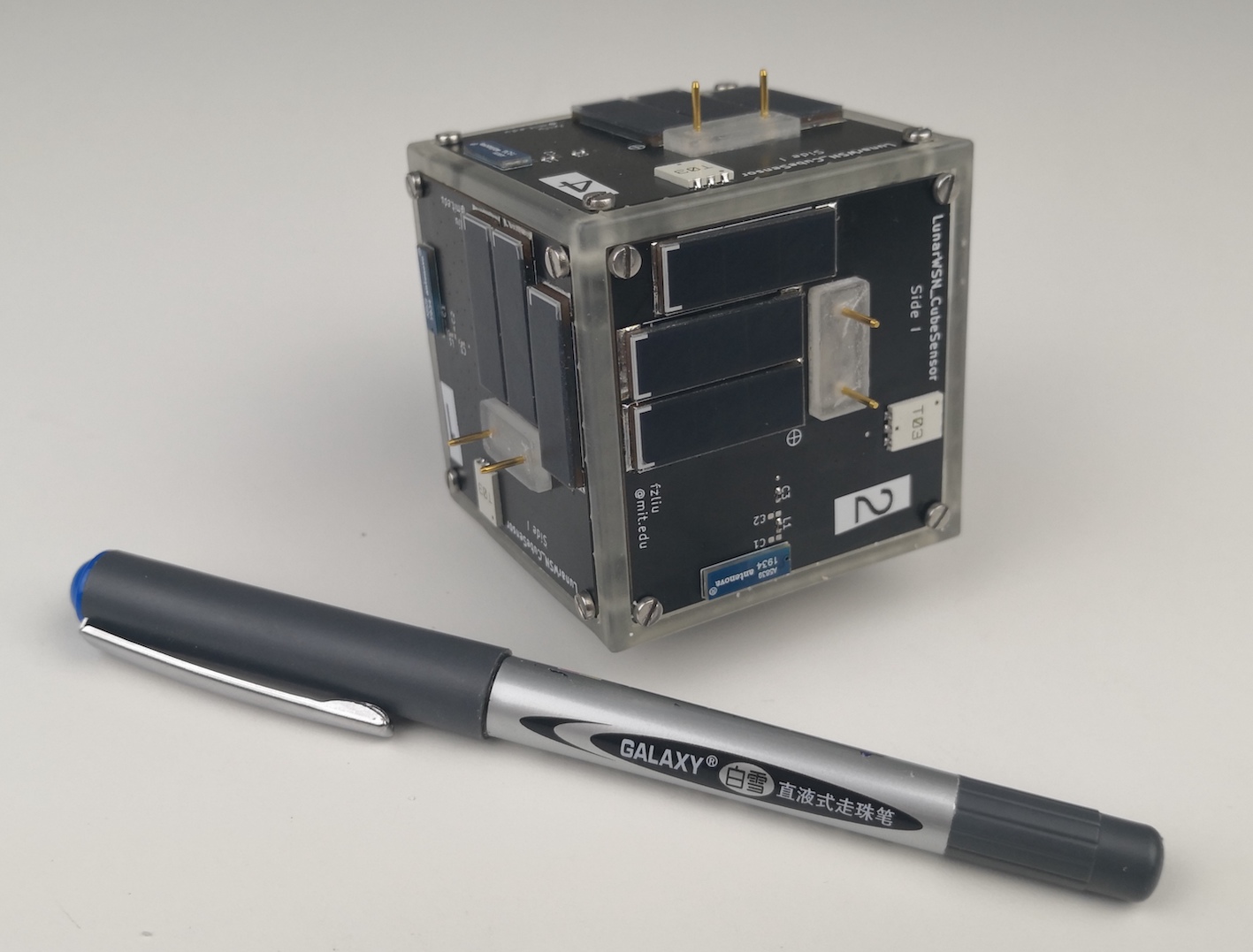
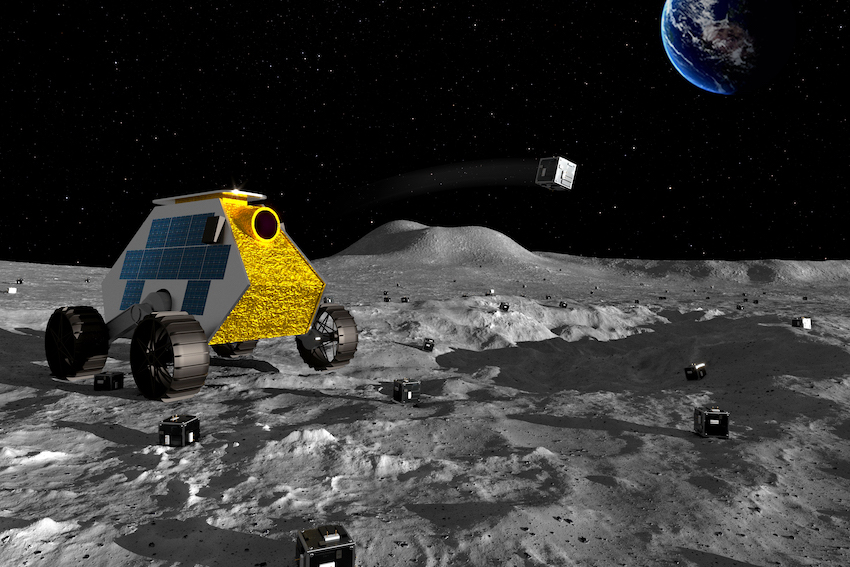
Design
Each sensor node is an omni-directional design, and has wireless communication antenna, wireless ranging antenna, sensor probes, and solar panels on each side of the node. No matter what landing gesture is, each node can always have wireless connection with other nodes and can harvest energy from the sunlight.
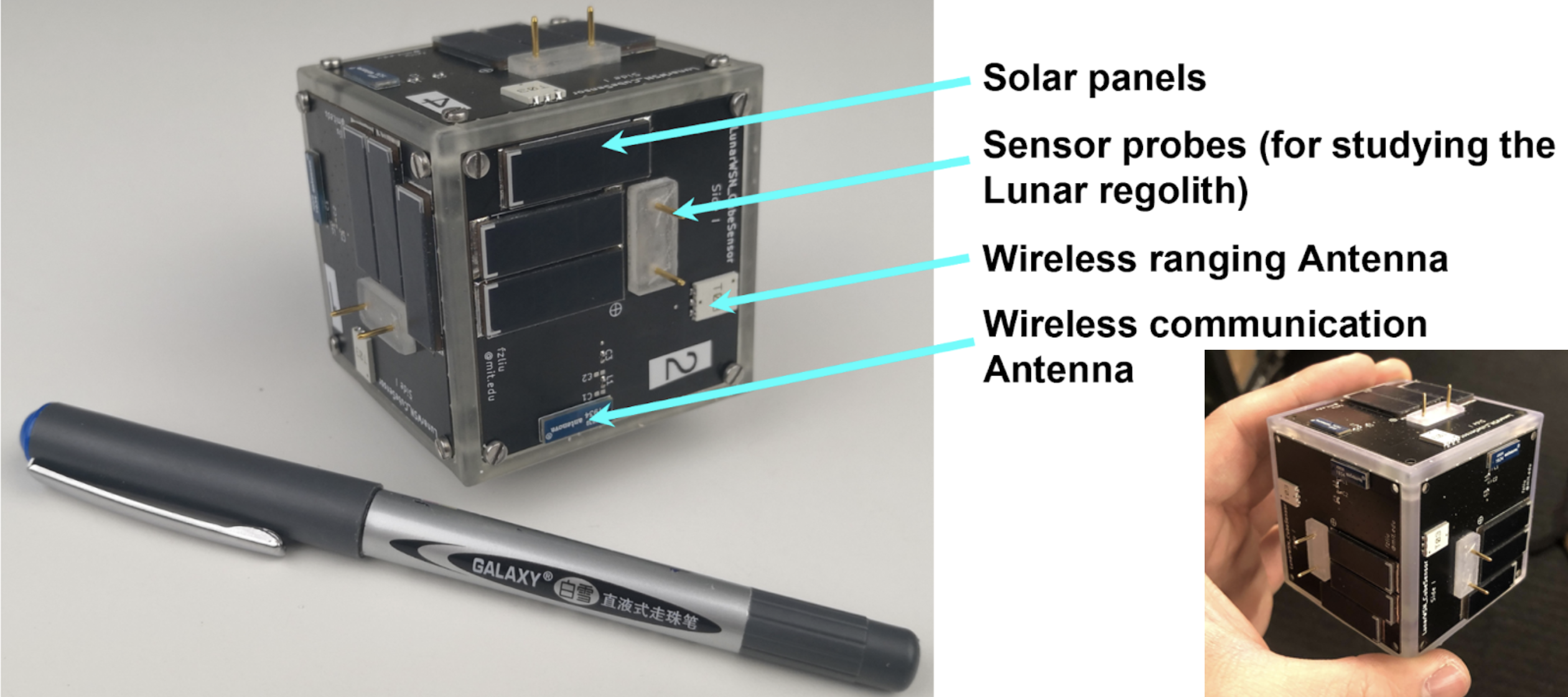
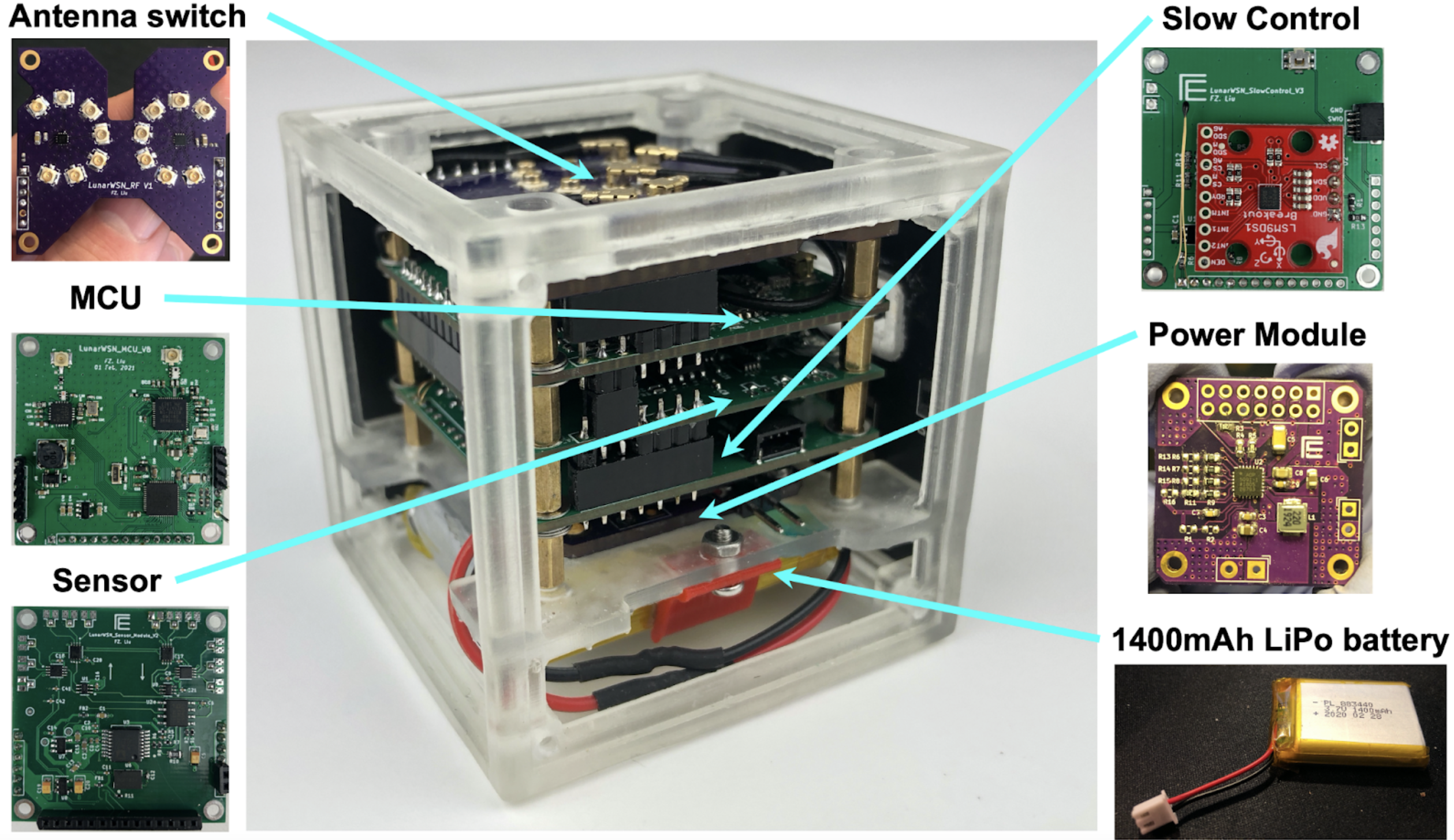
| Module | Functions | Design |
|---|---|---|
| Antenna switch module | Choosing the antennas which can provide the best radio connection for wireless communication and wireless ranging | Including two SP6T (single pole, six-throw) RF switches (SKY13416-485LF, Skyworks) for both wireless communication and wireless ranging. The RF switches are controlled by the MCU module. |
| Main Control Unit (MCU) module | Performing the wireless communication, wireless ranging, and controls other modules through different interfaces (GPIO, I2C, and SPI). | The main controller IC is a nRF52832 (Nordic). An UWB (Ultra-Wide Band) radio IC (DW1000, decaWave) is used for wireless ranging, and a 2.4GHz IC (nRF24L01+, Nordic) is used to realize wireless communication. |
| Sensor module | Performing main sensing mission. Can be tailored by different mission requirements. | The current sensor module we designed is composed of an impedance convertor IC (AD5933, Analog Devices) and two SP6T circuits. Each SP6T circuit is made up of a SPDT (single pole, double-throw) analog switch (ADG849, Analog Devices) and a SP3T (single pole, three-throw) analog switch (TS5A3359DCUT, Texas Instrument). The SP6T is controlled by the MCU module and selects which node face to use for sensing. |
| SlowControl module | Collecting housekeeping data indicates the node's status, including temperature (through thermistors), battery voltage, landing posture, etc. | Including a fourchannel low-power low speed ADC (ADS1115, Texas Instruments), a COTS IMU (Inertial Measurement Unit) module (LSM9DS1 module, Sparkfun). Also including a connector for programming and debugging. |
| Power module & Battery | Harvesting and storing energy. | A MPPT (maximum power point tracker, AD5091, Analog Devices) for energy harvesting, and a 1400mAh LiPo battery. |
| Node face | Six faces on each node. Providing surface for installing antennas, sensor probes, solar panels, and other components that need to be exposed to the external environment. | Each face has a 2.4GHz chip antenna (A5839, Antenova) for wireless communication, an UWB chip antenna (AH086M555003-T, Taiyo Yuden) for wireless ranging, three solar panels (KXOB25_05X3F, ANYSOLAR) for energy harvesting, and a pair of sensor probes for injecting sweeping-frequency AC signal into the MUT (material under test). |
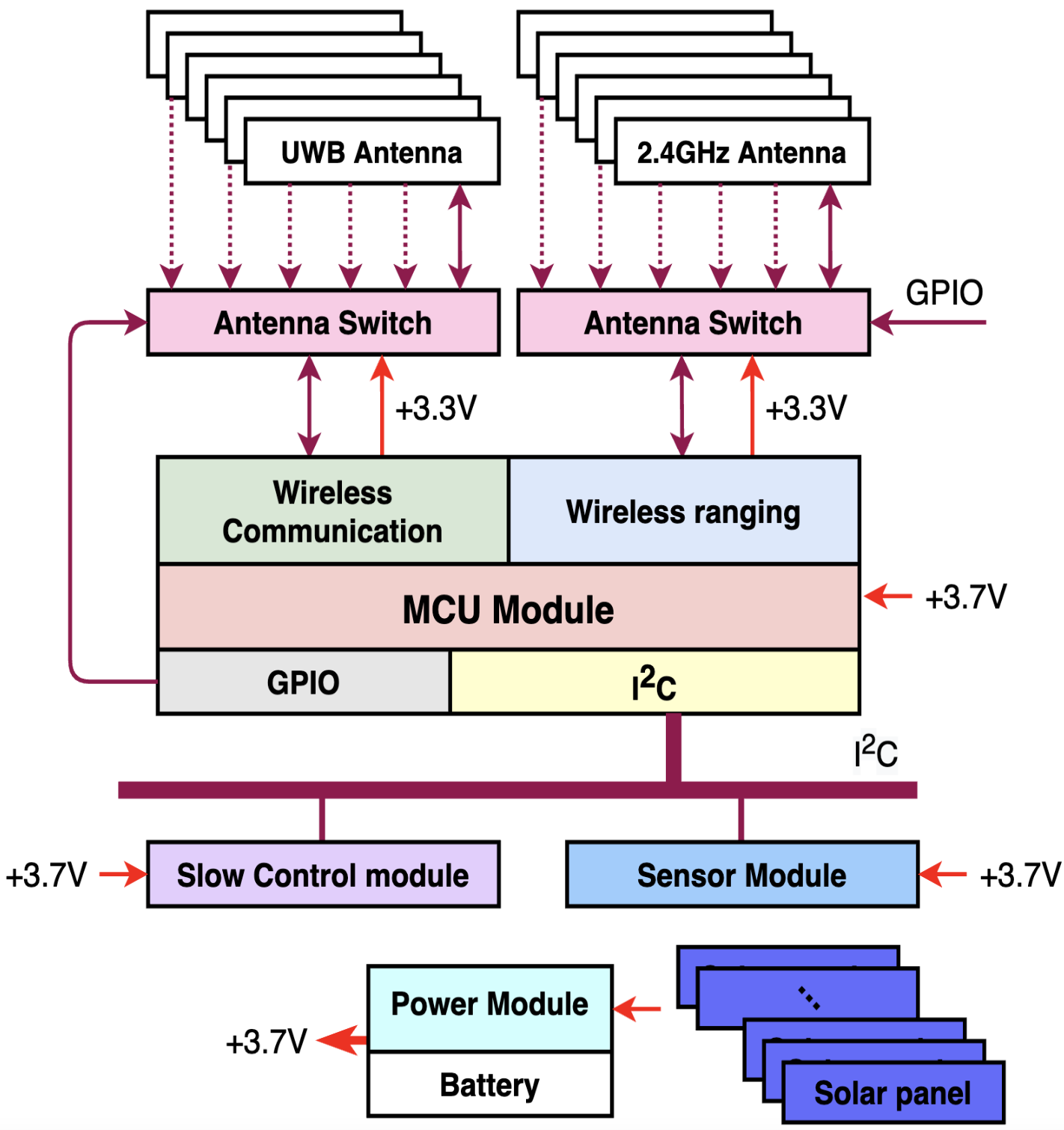
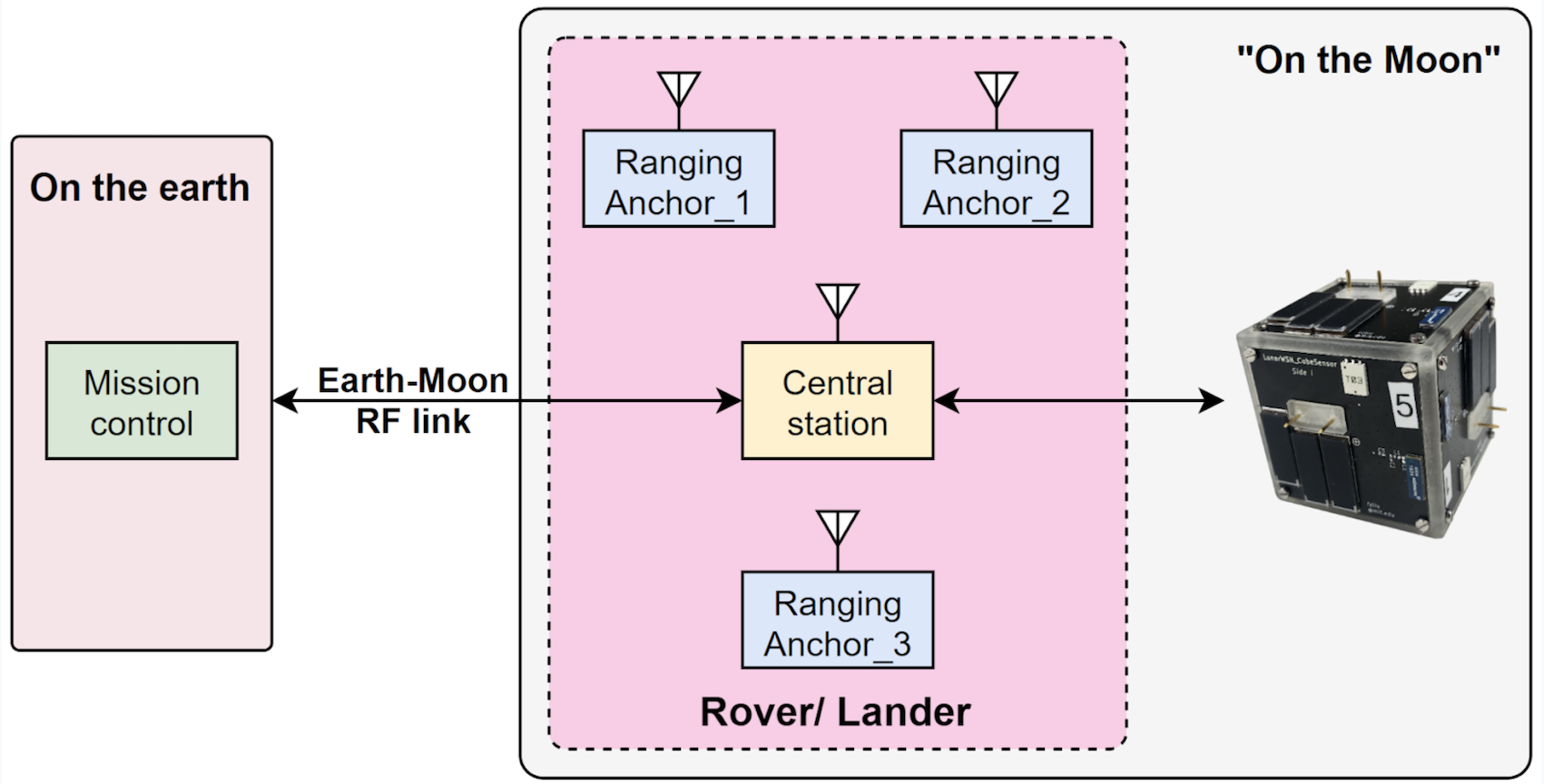
Performance (Tested in a indoor Lab environment)
Energy harvesting
The solar power harvested is at least 18mW.
Wireless communication
Communication range is 7.5~8m.
Wireless localization
0.49m (max X error); 0.69m (max Y error).
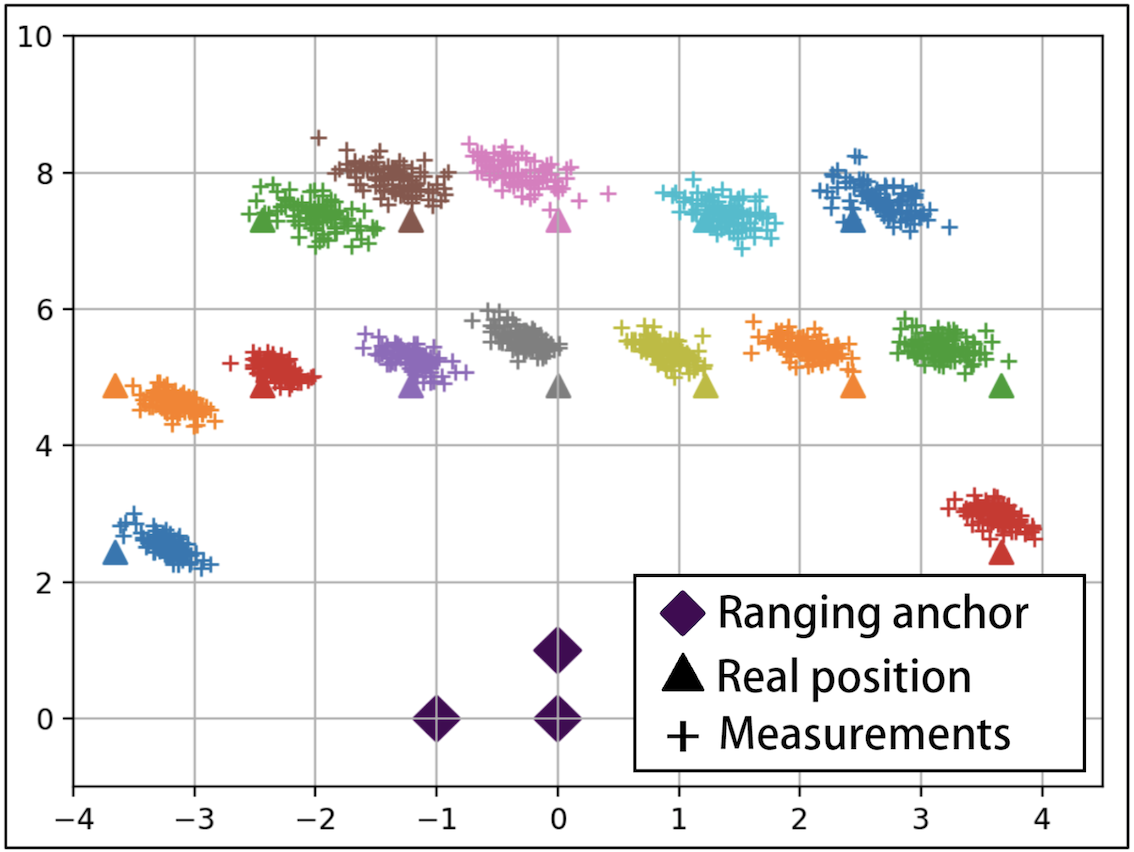
Water content detection (Type II pure water with Lunar soil simulant)
The absolute impedance drops rapidly with even less than 1% of water added. The real relative permittivity increases more progressively as the water content gets higher.
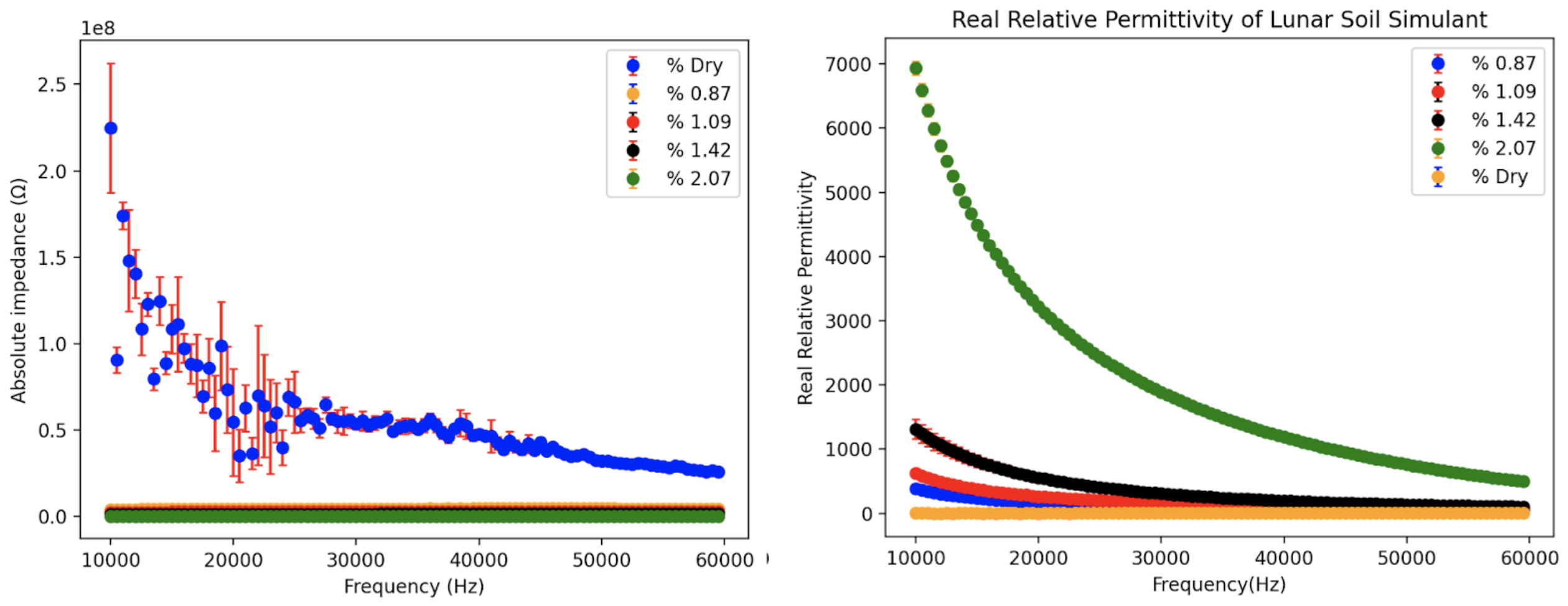
This work is published on the SmallSat conference 2022.
